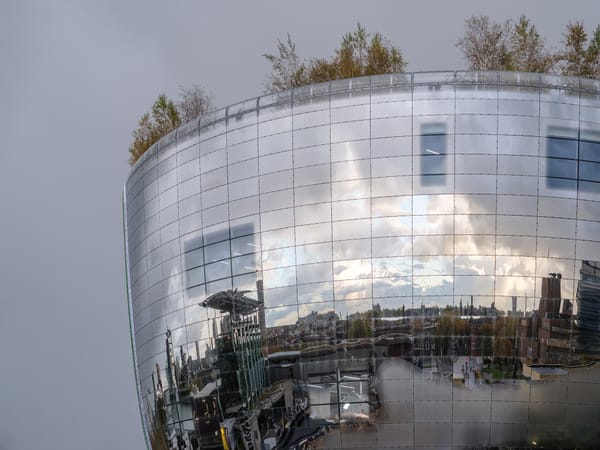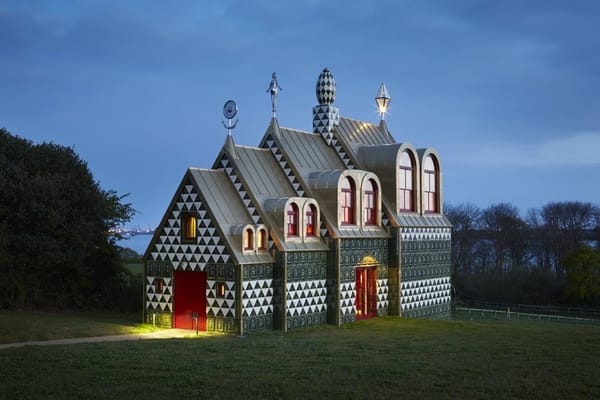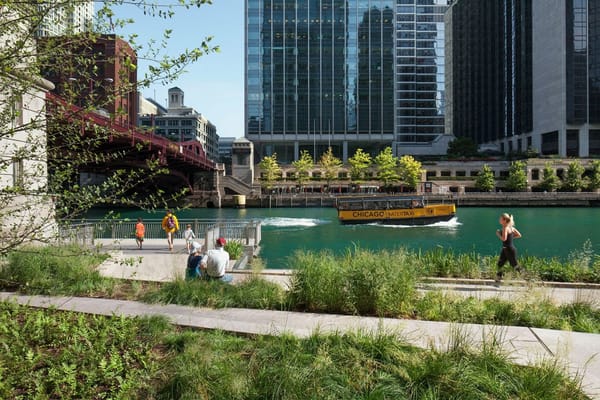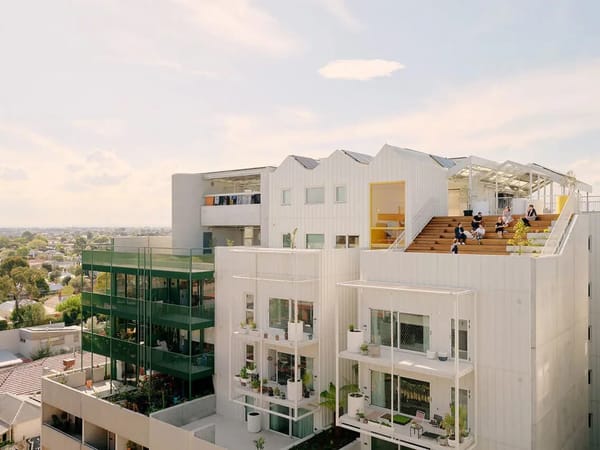The Frontier Interview: Terremoto
On creative autonomy, acknowledging labor and laborers, and building relationships that will last decades.
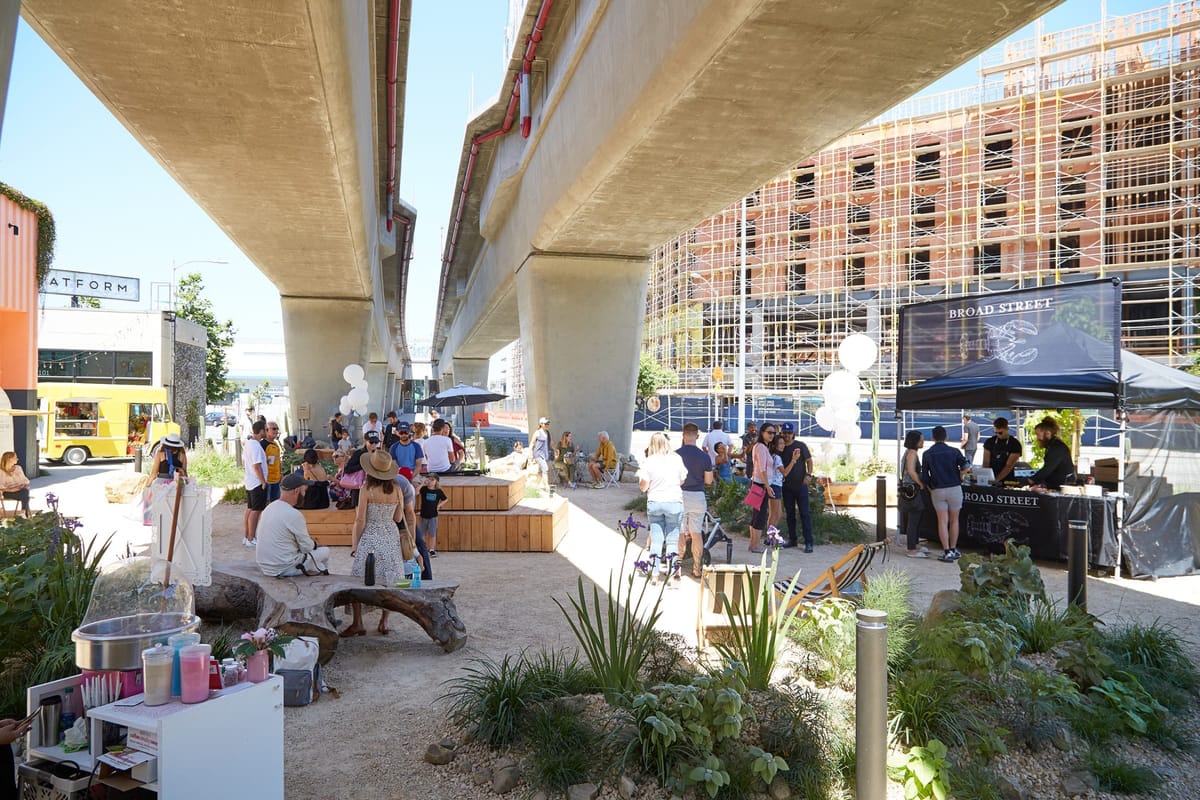
Hi everyone,
Last week, the Ontario Association of Architects announced the winners of its 2024 Design Excellence Awards. I was delighted to see two buildings featured in this newsletter, KPMB’s new tower at Boston University and MJMA’s community center and park in Mississauga, on the list. Ditto for a performing-arts hall by Diamond Schmitt Architects, with whom Frontier is wrapping up a major editorial project, and LGA’s new Toronto Public Library branch, which I’ve enjoyed working from. Congrats to all the winners!
This week, an interview with a cofounder and a senior designer at Terremoto, the Los Angeles– and San Francisco–based landscape design firm. Scroll down for an invigorating read about creative autonomy, acknowledging labor and laborers, and building relationships that will last decades. Up top: takeaways from that conversation and the usual selection of good links.
Until next week,
Brian
Some takeaways from this week’s interview
- A garden or landscape is a process, not a product, so show your process—and credit everyone involved in the work.
- Give your design teams creative autonomy, and they’ll surprise you with what they create—and be more willing to stick around rather jump studios or strike out own their own.
- You don’t have to grow your headcount to grow your influence. Create books to share your ideas, spin off projects into their own organizations that can reach new audiences—there are numerous ways to advance the good you want to do in the world.
🔗 Good links
- 🪵🏢 On “clash meetings,” fireproofing, building codes, and momentum: Boyce Thompson offers a useful primer on how mass-timber construction is evolving rapidly (Also: Ontario will soon allow eighteen-story mass-timber buildings.)
- 🌉🎙️ How can we rethink what infrastructure looks like to meet our future needs? Deb Chachra, who appeared on our podcast in October, was a guest on CBC Spark last Friday
- 🛣️🚗 Pedestrian deaths “are the predictable, preventable result of 80 years of DOT ideology and policy that has set the car as the base unit of transportation”
- 🏘️🤳🏻 Diana Lind: “I love the way [Ossé]’s enriching the housing dialogue on social media—something that’s pretty rare among [politicians].”
The Frontier Interview—David Godshall and Sarah Samynathan, Terremoto

I’ve followed Terremoto from afar since before the pandemic, galvanized by its unconventional approach to both garden design and running a business. The company, founded by partners David Godshall and Alain Peauroi in 2013 and now run with fellow partners Story Wiggins and Jenny Jones, has two offices, in Los Angeles and San Francisco, that operate mostly independently. Staff designers are given autonomy. The company has instituted a profit-sharing scheme. They give clients syllabi when starting a new project. You’d think this would be fringe activity, but the firm has twice been included on the infamous AD100 list.
The work it does includes gardens for A-list celebrities, landscapes for 1960s-era intentional communities, parklets under highway overpasses, and many, many neighbors’ yards. Last week, I spoke with Godshall, who was in LA, and senior designer Sarah Samynathan, who works in the San Francisco office.
Brian Sholis: Can we begin with a brief outline of your office structure and on “being prolific by default”?
David Godshall: The technical way to answer that question is that there are two offices, in Los Angeles and in San Francisco, which run pretty much autonomously.
But we also give our designers a lot of autonomy. The prevailing model in most design and landscape architecture offices is that the person at the top makes a sketch and the design works its way down the hierarchy from there. The result is an office with a singular “voice” and employees who are less invested emotionally or creatively. We try to turn that on its head and let designers like Sarah own their projects. Usually a partner will be involved for the first meeting or sketches, but the greatness of the results and the smoothness of the process comes down to them. And by crediting people transparently on our website we make it clear who was involved.
Ultimately, we try to keep hierarchy to the absolute minimum required to maintain coherence, efficiency, and a profitable business.
Sarah Samynathan: For context, I started at Terremoto right out of school, at entry level. In a normal environment, someone in my position would just do redlines for a few years. But the autonomy David describes is also why our projects can look so varied; everyone’s bringing their own lived experiences and knowledge to bear upon their projects. I’ve found this model to be unique and it certainly is never boring.
BS: I take the point about incorporating multiple perspectives into the office and that’s why the kind of aesthetic output of the office seems very broad. I also want to tie it to a “post-internet landscape design,” a phrase you used early in the firm’s life, David. Around that time, a decade ago, an equally visually diverse “post-internet art” was also circulating. You’ve also collaborated with artists and used language seemingly borrowed from art history. What does looking toward art teach you about the work you do or influence the work you want to do?
DG: I’ll talk around the question and mention we’re working on a book right now, our first as an office, and at some point the publisher asked us, “What about aesthetics and beauty? You’re talking about all these other things, but your work is often quite beautiful.” I took the compliment, but I’m struggling with something I consider a working definition: previously, in garden- or landscape-making, beauty became a requirement, something that was imposed on the garden. Think of shaped hedges or plants selected solely for their colors.
We’re more interested in beauty as an emergent property. We want new ways of understanding beauty, and we’re increasingly rooting them in our ethics. We want to encourage the beauty found in the aliveness, or the kindness, or the gentleness of what we do as landscape makers. How things look, in this view, is slightly less important.
To bring it back to the question, I guess we don’t look as often, or feel as beholden, to landscape traditions. Perhaps those traditions are less interesting to us because they prioritize the human, prioritize engineering. We’re more interested in a wild, natural, and softer future.
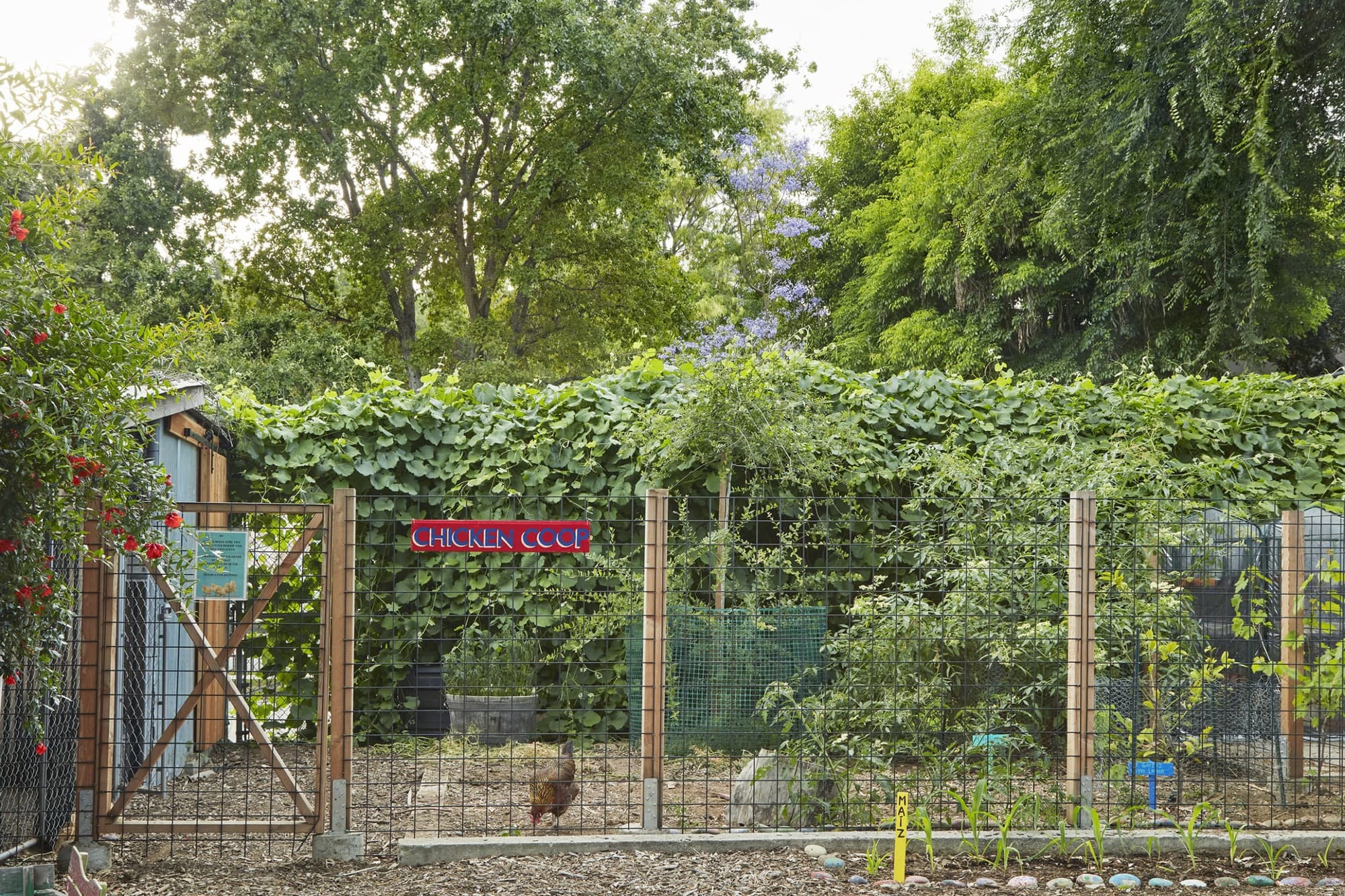
SS: The human isn’t removed entirely; I think more in terms of human relations. There’s something about working in a garden that reminds me of personal relationships: you don’t just show up and have everything be great, you have to put in care, put in work. Sitting with a garden, learning it slowly, encourages it to disclose itself to you. Beauty isn’t a two-dimensional image.
BS: More recently, you’ve talked about “building latitude” into projects. You’ve half joked that it allows you to minimize onerous construction documents, but it seems also a method of conjuring emergent beauty …
DG: Sometimes the creativity happens when we discover something on site that we were unaware of before we got our hands in the dirt. That latitude allows us to experience and run with the joy of working, especially on small residential projects where we can keep it loose and scrappy.
As our office aspires to and does bigger work, those projects inevitably become a little more buttoned-up and hierarchical. We’re trying to figure out how we can do the thing that we do, the way that we do it, and scale it.
SS: By leading with our principles, I feel we’re creating something that can scale. In some sense, regardless of where in the world you are, if you show care and spend time with it, you can make a “Terremoto garden.”
BS: Speaking of those smaller gardens, I was struck by your comment, in a lecture, that you feel you can perhaps do more good work for the planet, faster, by working on private residential commissions. You’ve created something like 250 gardens in your pocket of Los Angeles. Can you elaborate on this idea, as well as what other things you’re thinking about that can accelerate the turn toward native plantings and less artificial landscapes?
DG: Wildlife scientists talk about “patchwork ecology”—they noticed that animals can move through the city as long as they have reservoirs or islands of space with the plant species they need. They create paths of travel and return to them regularly. In some sense that’s what we’re creating with all our small gardens. Larger projects require public processes, navigating bureaucratic channels. That’s not necessarily bad, but it can be slow. As an office devoted to radical change, we appreciate that single-family residential projects circumnavigate all that so we can built swiftly. Sarah, you’re working on something like ten projects right now, yes?
SS: Yes.
DG: That’s where “prolific by default” comes in. Each person in the office can manage five to fifteen projects, depending on their scale. I hope that Terremoto accelerates the ecological rejuvenation the urban environments in Los Angeles and San Francisco. It’s not our aspiration to become a global firm, or even grow much beyond our current size. The book we’re currently working on, instead, is a means to share our ideals, give away some of our secrets, and tell people, “This is what we think about. You should think about it, too.” You might have different answers to the questions we pose, and the gardens will look wildly different in different parts of the world, but that’s all good: it’s the homogeneity that’s destructive.
SS: I also think a lot about the psychology of what we do. Every time we start on a residential project, the client says, “I want this, I want a fire pit, I want a swimming pool.” Once you dive into things with them, they’ll come to understand their property as part of something larger, and they feel a responsibility to that larger ecosystem. They start noticing things out in the world they hadn’t before seen.
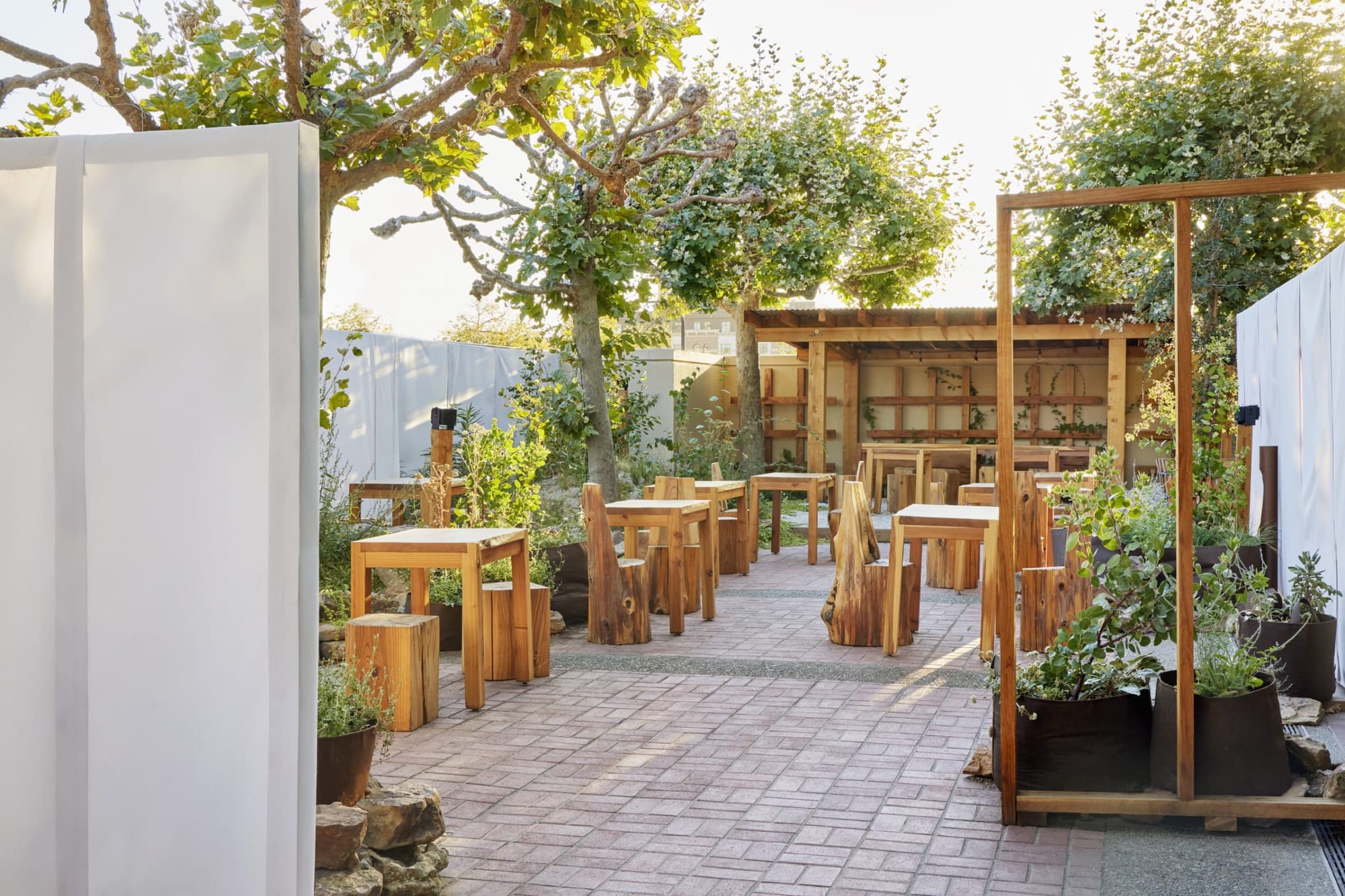
BS: Sarah, I wanted to turn to a project you led, called Café Ohlone. It’s my understanding that in some sense you initiated it, too …
SS: Yes, sort of. Early in the pandemic, when we were all stuck at home, I was watching Bon Appetit videos online and saw a feature on Indigenous chefs Vincent [Medina] and Louis [Trevino], who were talking about plants they use as cuisine that I knew only from horticultural or ornamental lenses. It led me to reflect on my Sri Lankan heritage, and about the plants I love in the vegetarian dishes I eat.
So I cold emailed them to say that I’m in the Bay Area, I work with plants all the time, how can I help? Can we volunteer? It turns out that as I wrote they were getting an outdoor restaurant space; they needed to transform a courtyard on the Berkeley campus while respecting numerous constraints.
BS: If I understand correctly, the institutional host of that restaurant is a museum of anthropology—
SS: Yes.
BS: I can imagine that it has … vexed collections, and that the challenges therefore weren’t only bureaucratic.
SS: It was challenging. Logistically, we couldn’t dig down, we couldn’t remove the paving, we couldn’t touch the existing trees. Everything we did had to be reversible. We all got very invested in the work, both conceptually and in terms of seeing it through. We built a lot of the project ourselves, digging with our own hands.
DG: I say this having had basically nothing to do with the project: from the outside, it seemed like there was so much goodwill and momentum behind making this project happen, bringing these Indigenous entrepreneurs into a “permanent” space, and I’m proud of the ways our team pierced the bureaucracy to get things done.
SS: It’s probably the most meaningful project I’ve ever done. I’d go fight through the fire marshal’s red tape again today.
BS: One thing about the project is that it’s acknowledging a history that is typically hidden. And it seems an ethic of acknowledgment is important to the office. You’re attempting to broaden the conversation about landscape firms acknowledge labor and interact with planters, design-build companies, and the like.
DG: It all began from a slightly more innocent place, which is that we had always taken lots of pictures during projects. So we showcased them on our website and always liked crediting everyone as the office grew. The calamitous state of our world has encouraged us to examine all our relationships with tradespeople, with the adjacent industries we interact with, and it became clear the biggest one is made invisible. In large part, in California, landscapes are made by Latino men, a fact that is almost never acknowledged in design media. We decided to take issue with that. We wrote some articles and continue to investigate how we can do better.
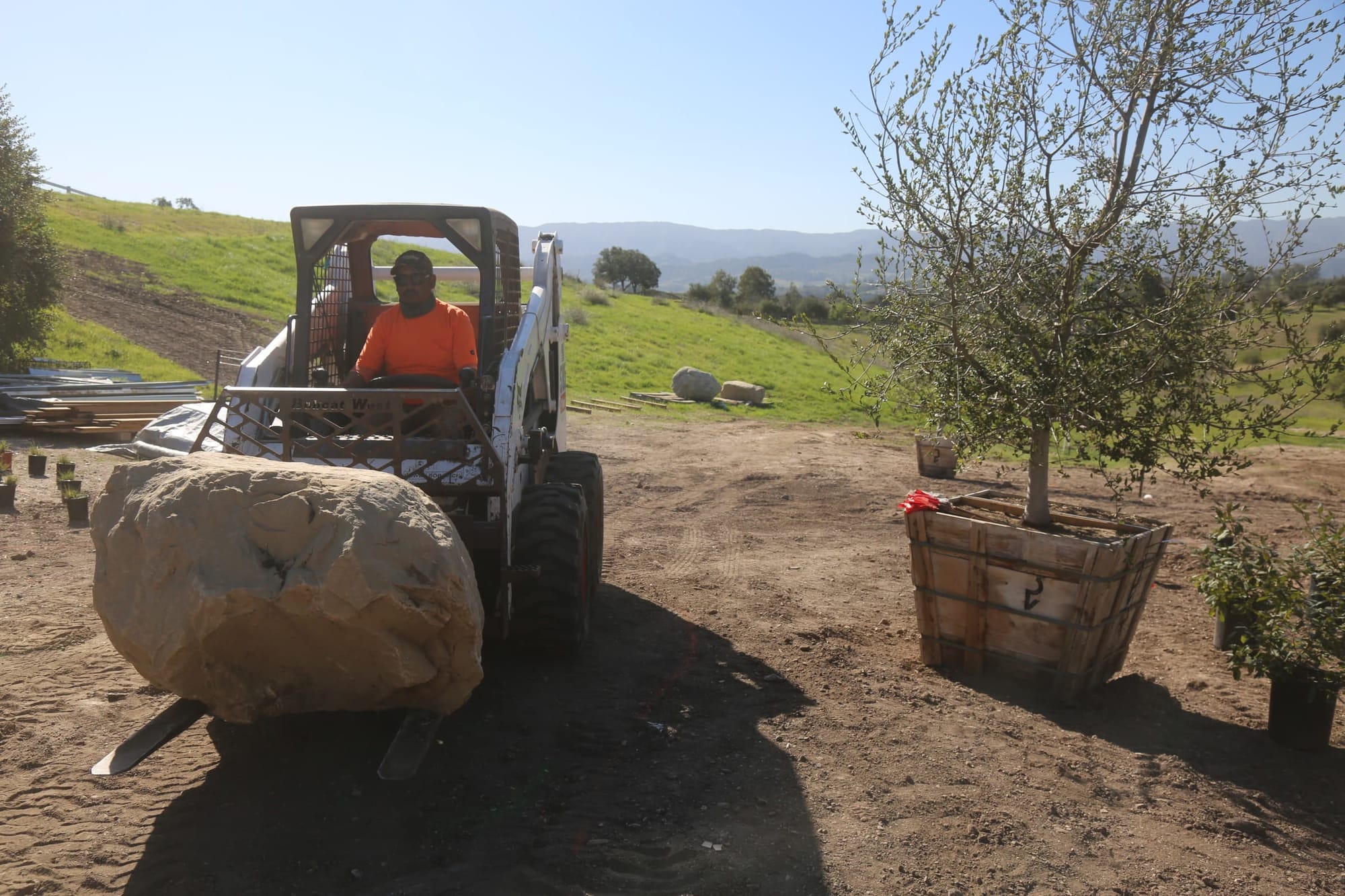
SS: I’m part of a Land and Labor working group within the office. There are so many issues in California: labor histories, immigration, documentation status. We bring these issues up in early conversations with clients and we try to handle issues on-site through this lens of awareness.
DG: This goes back to the larger point about relationships to power and your first question about the dynamic in our office. Too often there is a sharply hierarchical relationship, in a client’s mind, between designer and a builder. We’re trying to prove that softening that sense of hierarchy, letting everyone express themselves and make use of their experience, leads to better work.
SS: And before we move on, I want to add that we’ve begun asking whether, by doing looser drawing sets, we’re giving builders more opportunity for their skill sets to shine or creating more risk and exposure for them with a client? We go back and forth, we keep talking about it …
DG: In some sense, the conversation is the “product” of something like our Land and Labor group.
BS: Elsewhere, you’ve stated you’re not interested in growing the firm, so I’m curious, again, about how you’re accelerating your impact. You’ve mentioned the book, exposing people to the ethics and thinking that inform your work …
DG: Ideas scale more readily than gardens do. Meeting people where they are and giving them the tools to make a Terremoto garden is the first thing. That’s what the book, which should be out in about a year, is for. But also: I hope that we encourage an explosion in small practices doing similar-ish work scattered across the country, across the world. I don’t mind competitors! There’s enough land that needs caring for to go around. Handing over the Test Plot program to Jen Toy is an example, too: we’re disinterested in maintaining tight control or ownership over our ideas, our concepts. Our planet is in a woeful state; trying to control these ideas would be petty and selfish. So let’s get it out into the world and trust that we’ll have enough work to make payroll.
SS: There’s power in being able to ask questions and not give answers, but encourage people to come to their own answers. I want ownership to be distributed through my community, I want to be involved in ongoing processes.
DG: In some sense, the capitalist growth imperative is why we’ve messed up the planet as much as we have. We’re content to operate mostly locally, where we have the most ecological and social wisdom. People are asking us to work further away, to work on bigger projects, and we’re still trying to figure that out. How do we navigate those opportunities with thoughtfulness? We know the conventional model of landscape architecture it outdated—both the “design genius” and the “work on it until you hand it over, then be done” aspects of it. We’re constantly trying to figure out how to do better. Sometimes gardens don’t become themselves for decades. We want to build relationships that allow us to ensure that these places will be cared for on that time scale.


